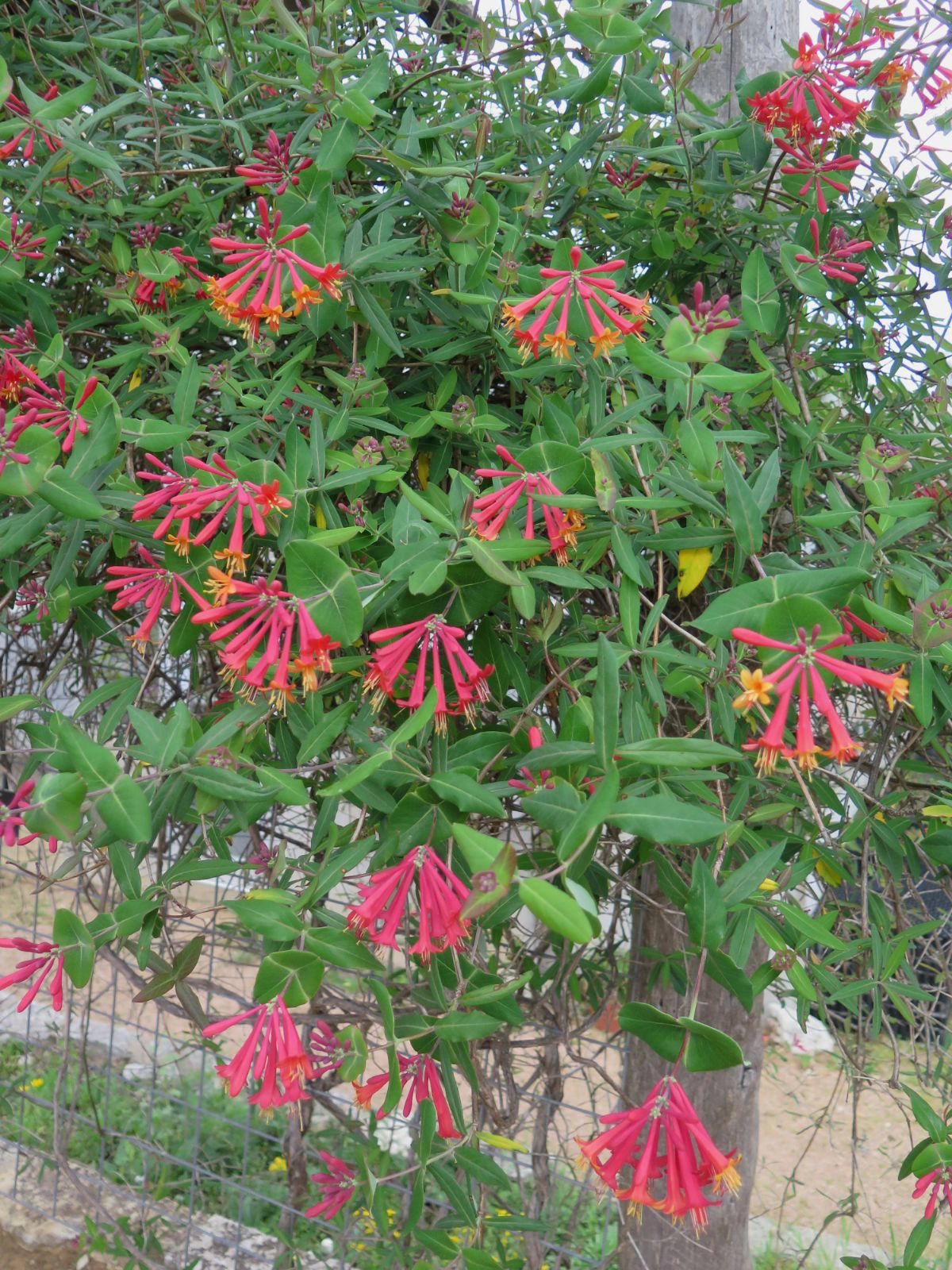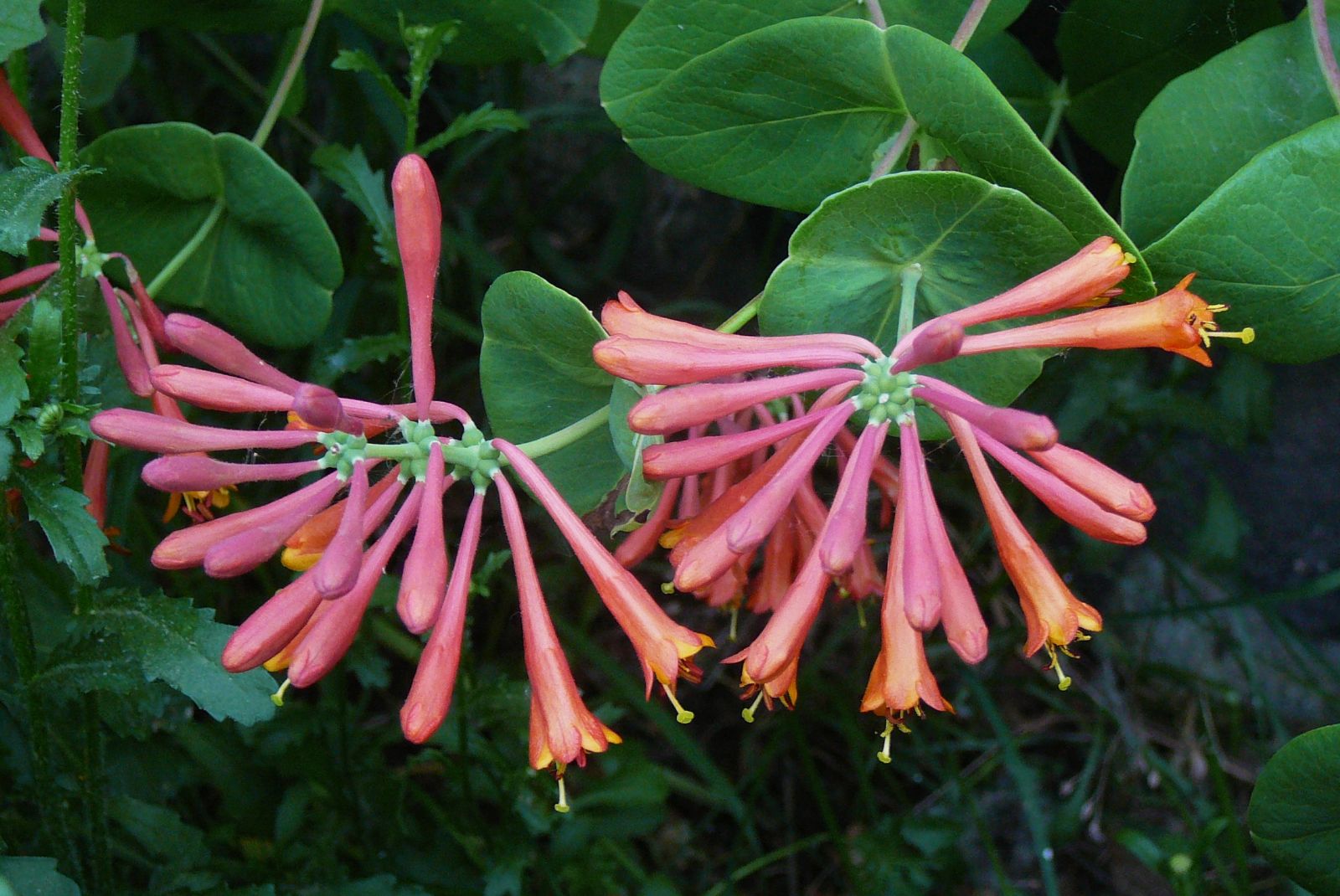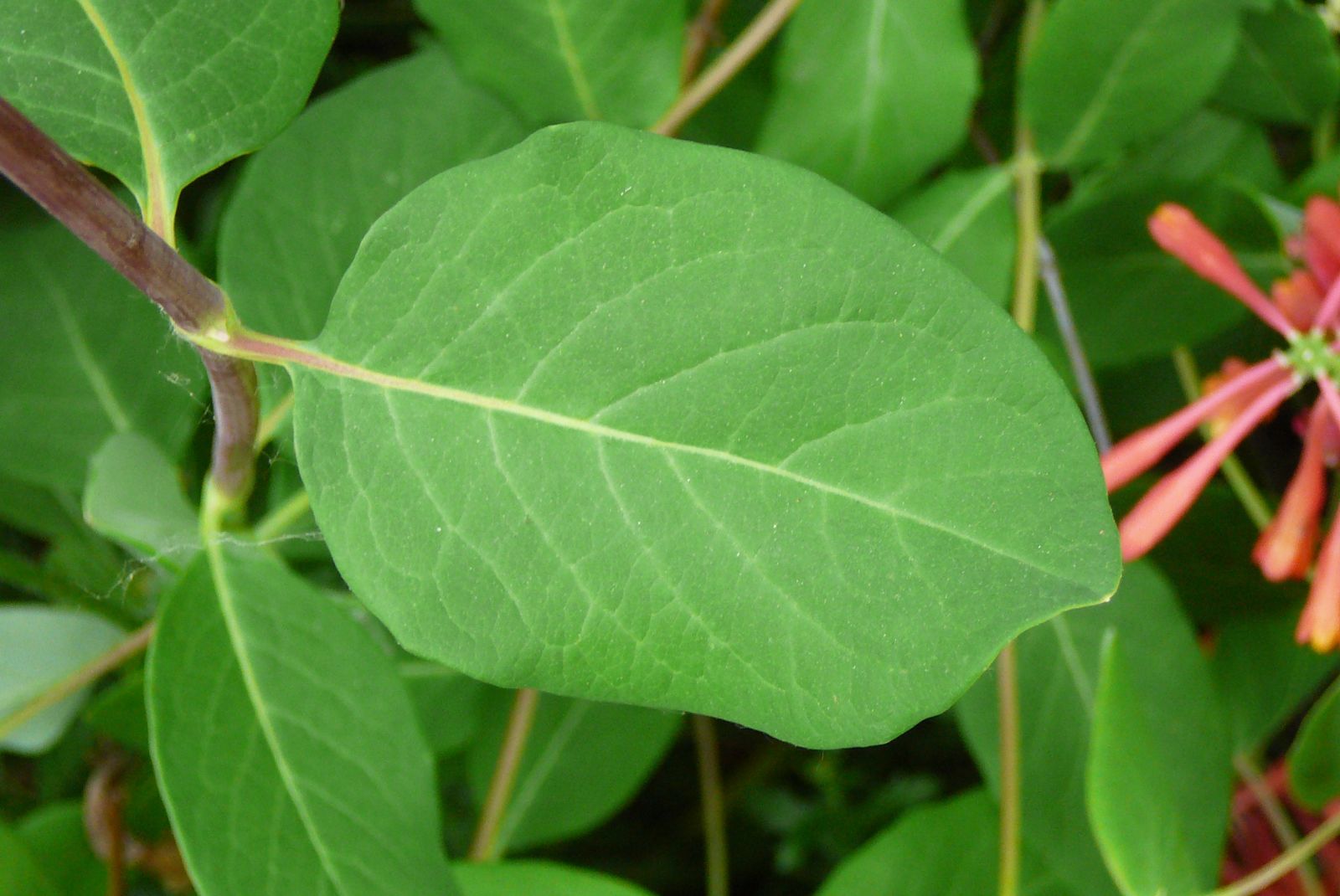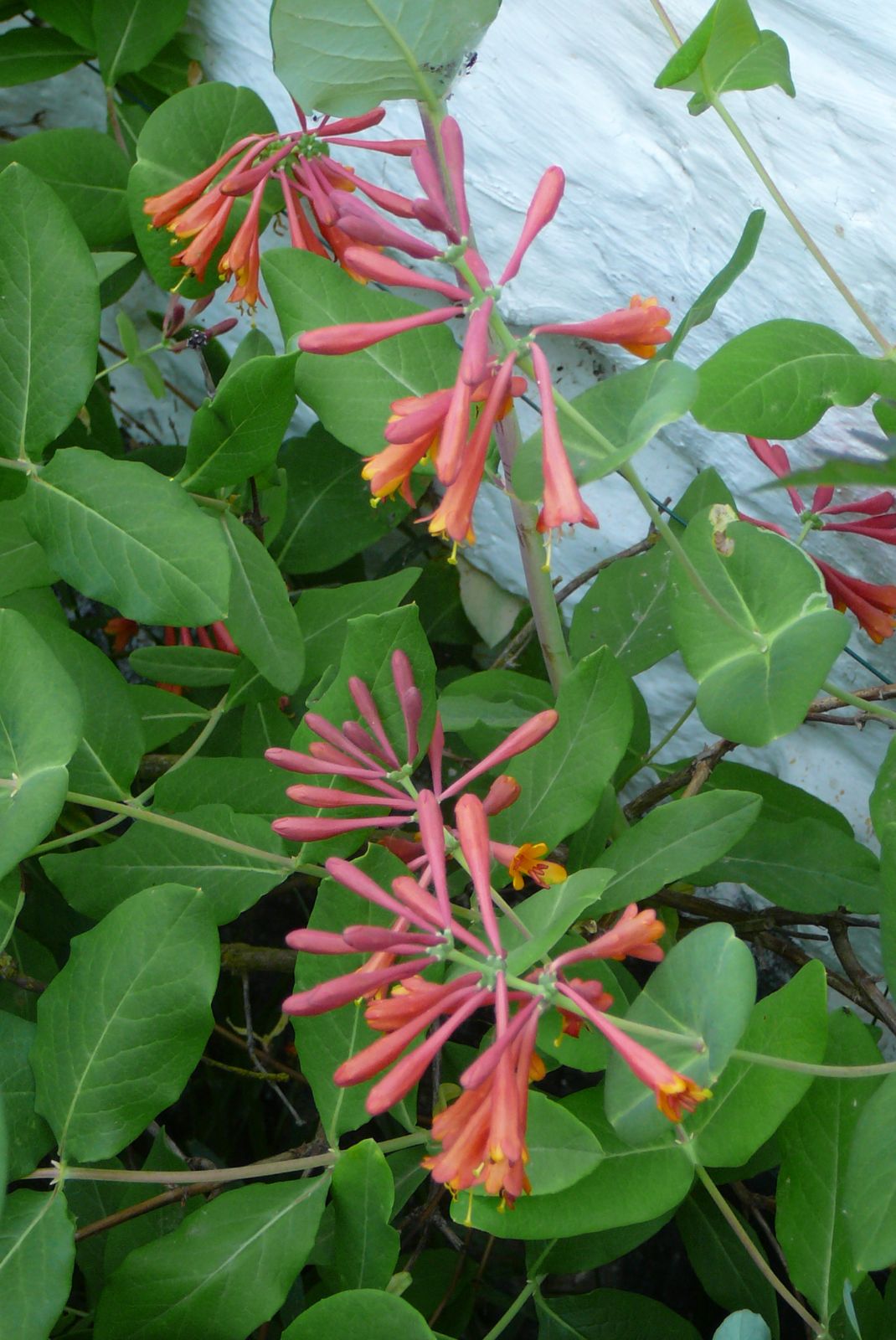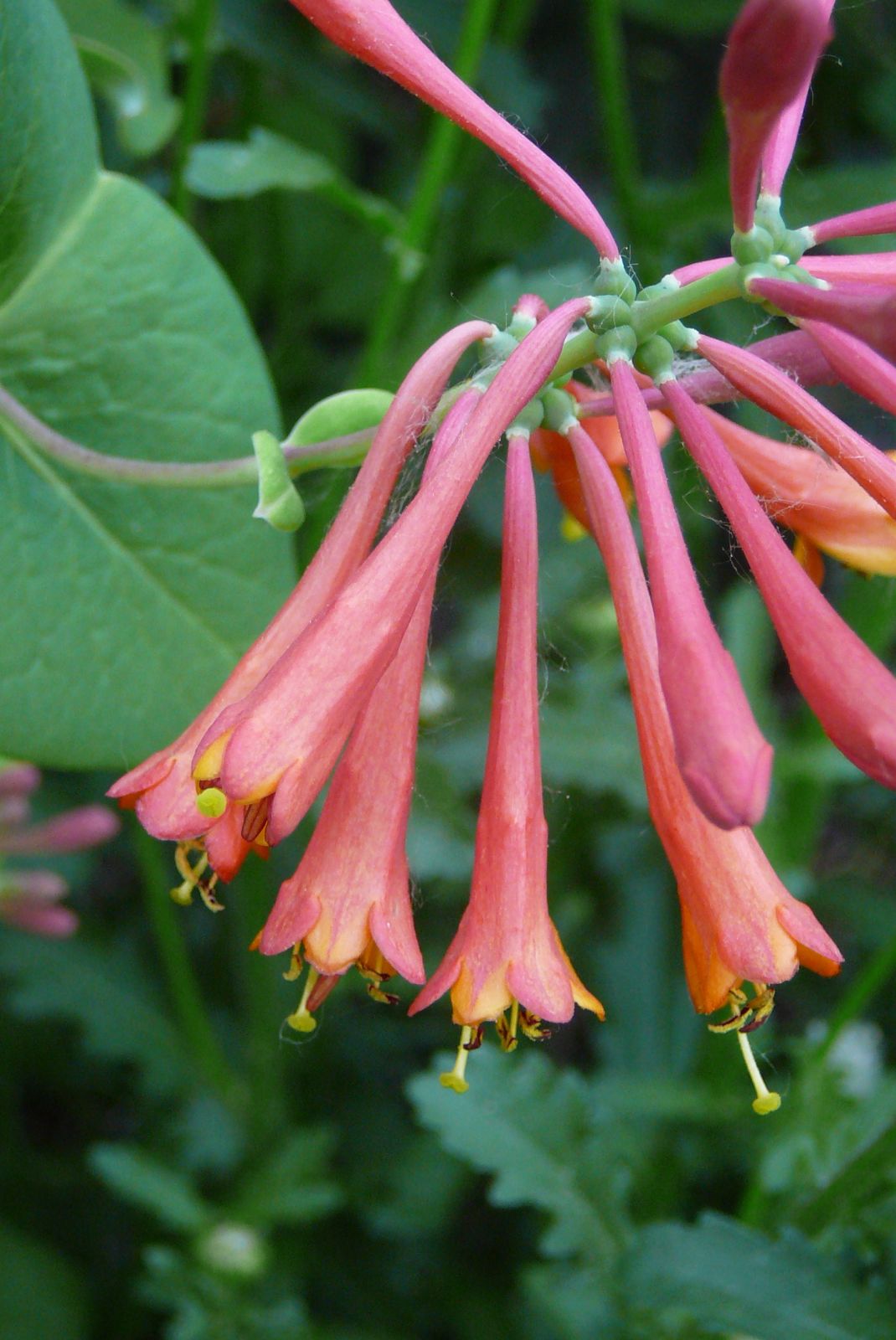Lonicera sempervirens
Credits
Article from Bean's Trees and Shrubs Hardy in the British Isles
Recommended citation
'Lonicera sempervirens' from the website Trees and Shrubs Online (treesandshrubsonline.
Genus
Common Names
- Trumpet Honeysuckle
Infraspecifics
Other taxa in genus
- Lonicera albertii
- Lonicera alpigena
- Lonicera alseuosmoides
- Lonicera altmannii
- Lonicera × americana
- Lonicera angustifolia
- Lonicera × brownii
- Lonicera caerulea
- Lonicera caprifolium
- Lonicera caucasica
- Lonicera chaetocarpa
- Lonicera chrysantha
- Lonicera ciliosa
- Lonicera deflexicalyx
- Lonicera dioica
- Lonicera etrusca
- Lonicera ferdinandii
- Lonicera flava
- Lonicera fragrantissima
- Lonicera giraldii
- Lonicera griffithii
- Lonicera gynochlamydea
- Lonicera × heckrottii
- Lonicera henryi
- Lonicera hildebrandiana
- Lonicera hirsuta
- Lonicera hispida
- Lonicera iberica
- Lonicera implexa
- Lonicera japonica
- Lonicera korolkowii
- Lonicera ledebourii
- Lonicera maackii
- Lonicera maximowiczii
- Lonicera microphylla
- Lonicera morrowii
- Lonicera myrtillus
- Lonicera nervosa
- Lonicera nigra
- Lonicera nitida
- Lonicera periclymenum
- Lonicera pileata
- Lonicera prolifera
- Lonicera prostrata
- Lonicera purpurascens
- Lonicera × purpusii
- Lonicera pyrenaica
- Lonicera quinquelocularis
- Lonicera rupicola
- Lonicera ruprechtiana
- Lonicera setifera
- Lonicera similis
- Lonicera splendida
- Lonicera standishii
- Lonicera syringantha
- Lonicera tangutica
- Lonicera tatarica
- Lonicera tatsienensis
- Lonicera × tellmanniana
- Lonicera thibetica
- Lonicera tomentella
- Lonicera tragophylla
- Lonicera trichosantha
- Lonicera xylosteum
- Lonicera yunnanensis
A vigorous, climbing shrub, evergreen in mild localities; young shoots glabrous, glaucous. Leaves oval or somewhat obovate, 11⁄2 to 23⁄4 in. long, 3⁄4 to 2 in. wide, rich green and glabrous above, bluish and slightly downy beneath; stalk 1⁄4 in. or less long. One or two of the uppermost pairs of leaves are united and form a circular or oblong disk. Flowers unscented, rich orange scarlet outside, yellower within, 11⁄2 to 2 in. long, produced in three or four whorls (each whorl of usually six flowers), forming a terminal stalked spike. Corolla-tube slender, slightly swollen near the base; the four upper lobes are smaller than the lower one, but the corolla is not markedly two-lipped; style glabrous. Bot. Mag., t. 781.
Native of the eastern and southern United States, reaching as far north as Connecticut and westwards to Texas; introduced in 1656. This beautiful honeysuckle thrives best in the milder parts but is hardier than was once supposed and should succeed with the protection of a wall over much of the British Isles. It received an Award of Merit in 1964.
L. sempervirens is a parent of L. × brownii and L. × heckrottii.

